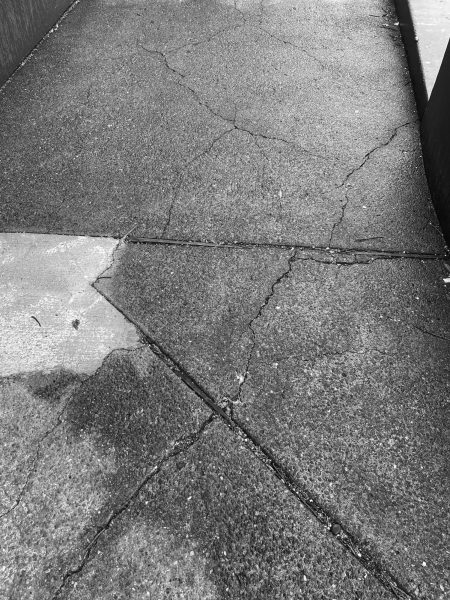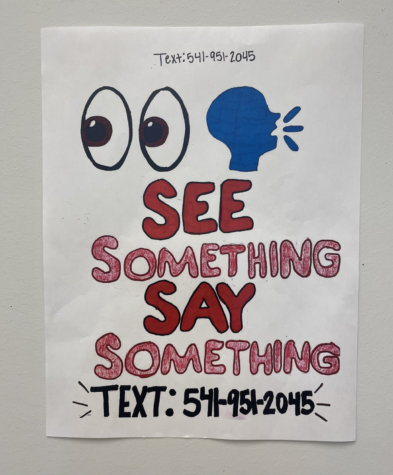The damaging effects of blue light
How has blue light been affecting students at Ashland High School?
With the new culture of online learning, students all around the globe have been exposed to more and more artificial blue light. Students from Ashland High School responded to a few polls done on Instagram to share their take on online learning and the exposure to more screen time:
The first poll asked if screen time effects are more positive or negative on each person individually. Out of 25 people who voted, 0 said positive. The results were unanimously negative.
The next question asked was “How has the increase of screen time due to online learning affected you?” We got many replies, such as feeling tired, lack of motivation, headaches and strained eyes, less activity etc. A couple people even said that they’ve spent more time on screens than they have outside solely because of online school.
What is blue light?
As we know, the sun projects light in wavelengths as a spectrum of different colors. The warmer colors, such as red, orange, and yellow, have longer wavelengths, therefore less energy. The cooler colors (green, blue, purple) have shorter wavelengths and more energy. All together, these wavelengths naturally balance each other when they come from natural daylight. However, with recent technology, we have been daily exposed to artificial blue light without the natural balance of the warmer colors.
Benefits of blue light:
Blue light that comes from the sun tells your body that it’s daytime and therefore time to be outside and active. It rewards you with boosted mood, attention, and reaction times, among a few other benefits. It’s been proven that natural blue light is essential for our well-being and energy levels. When it gets dark, the absence of natural blue light signals to our bodies that it’s time to rest. Blue light can also help with seasonal depression, a result of the seasons changing from summer to fall/winter that can make you feel fatigued and gloomy. To help with seasonal depression, blue light lamps are used to bring back the sense of warmth and sunshine.
Drawbacks of blue light:
With the benefits of natural blue light come the faults of artificial blue light. It can actually be quite harmful to your eyes. We have no natural way to defend ourselves against the high-energy waves in the absence of near-infrared light. The blue light waves reach completely to our retina, the inner lining at the very back of the eye. This can potentially be dangerous due to the fact that too much exposure has the ability to damage light-sensitive cells, possibly leading to macular degeneration, an incurable eye disease in which the central portion of the retina begins to deteriorate. This can lead to permanent loss of vision.
Another possibility that is more common is obtaining computer vision syndrome. This is present with most everybody after spending two or more hours looking at a computer or other technology. The problem with staring at a computer screen for an extended amount of time is that it’s harder for our eyes to focus on the details of the pictures that are being flashed in front of us. On a screen, the outlines and edges of characters are more blurred than they would be on paper. This is mostly because the pixels, which are the source of all the light, are each brightest in the center, and then fade towards the edges. The strain that we feel in our eyes comes from the difficulty of focusing. Our eyes involuntarily move to a decreased focus level, and then strain to regain the focus. The symptoms of computer vision syndrome include headaches, loss of focus, blurred vision, and/or strained, tired, burning, or red eyes.
Artificial blue light at night also stunts the secretion of melatonin, thus disturbing the REM sleep rhythm. It’s important to steer clear of looking at screens at least two hours before heading to bed so that your body can naturally produce the right amount of melatonin needed to have a good nights sleep.
How to avoid blue light:
The most common way to block harmful blue light waves are blue light glasses. The yellow tint that the lenses provide balances out the blue light waves, creating a healthier intake of the light. The same effect is used in blue light filters, mostly made from tempered glass, that you can cover your computer, phone, or tablet screen with. Some electronics even have a setting built into them called “Night shift”, where the colors are automatically adjusted to the warmer side of the spectrum.
As for the most obvious solution, developing hobbies to do off of the screens in your downtime can be extremely beneficial, especially in this day and age. Enjoy getting outside and spending time with your loved ones.










